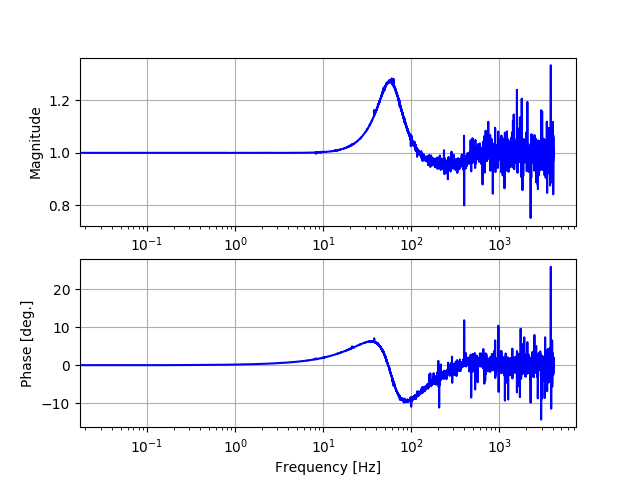|
Size: 1416
Comment:
|
Size: 1591
Comment:
|
| Deletions are marked like this. | Additions are marked like this. |
| Line 25: | Line 25: |
| * Comparison between PROC_C00_STRAIN and MICH_DELTA_TM+MICH_RESIDUAL [[attachment:trf-C00-Add.png|{{attachment:trf-C00-Add.png|Comparison between C00 and ADD|width="600"}}]] |
Step 4: Add two channels and make a strain frame file
For the initialization and running the pipeline, please refer step1
Access frame cache file by specifying frame_cache and instrument as in step2
Define a frame multiplexer(mux) to write channels into a frame as in step3
- Add CH1(MICH_DELTA_TM) and CH2(MICH_RESIDUAL) and output into ADD divided by the arm length to convert into the strain
1 arm_length = 3000
2
3 ch1 = pp.mktee(pipeline, pipe_dict["CH1"])
4 ch2 = pp.mktee(pipeline, pipe_dict["CH2"])
5 add = cp.mkadder(pipeline, cp.list_srcs(pipeline, [ch1, short_queue],\
6 [ch2, long_queue]))
7 add = pp.mkaudioamplify(pipeline, add, 1./arm_length) # Divide by arm length
8
9 keys.append("ADD")
10 pipe_dict["CH1"] = ch1
11 pipe_dict["CH2"] = ch2
12 pipe_dict["ADD"] = add
- Try the tutorial script Compare between ADD and CH3 ()
adder trf --frame=K-TEST-1209288320-32.gwf --channel=CALIB_ADD,CALIB_CH3 --output=trf.png
- Comparison between PROC_C00_STRAIN and MICH_DELTA_TM+MICH_RESIDUAL

